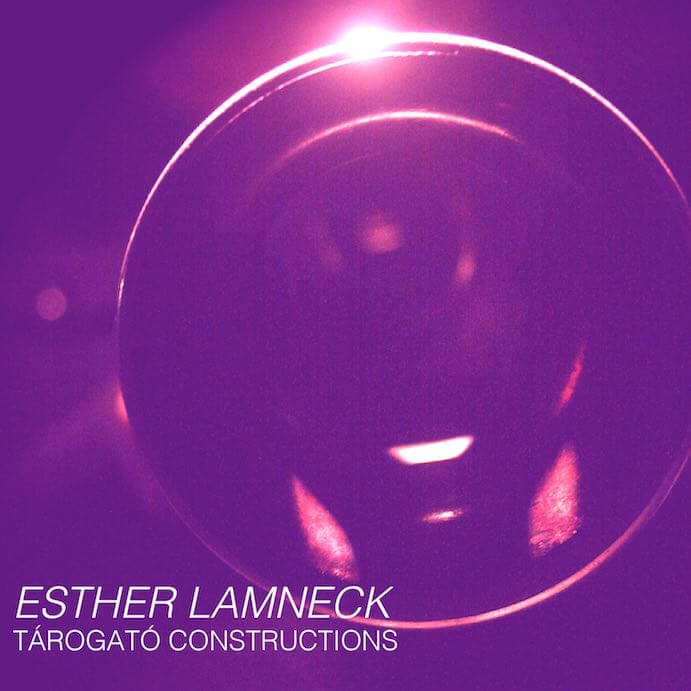On her recent release from Innova, Esther Lamneck trades her clarinet for its country cousin (the countries in this case being Hungary and Romania) the tárogató, a spectrally rich single-reed instrument capable of glissandi throughout its registers. Rather than a set of conventional solos, Tárogató Constructions offers the fruits of Lamneck’s sustained collaborations with composers who have invented responsive sonic environments in which she may improvise. Each of these “musical worlds” showcases both Lamneck’s command of the tárogató and its composer’s command of live DSP, and there’s much to envy.
The first two musical worlds on Tárogató Constructions are Lamneck’s works with Cort Lippe and Mara Helmuth, two important but somewhat vexing figures whose electroacoustic music is widely heard all over the world. Lippe and Helmuth claim (and I believe them!) that their recent pieces are predicated on ongoing and novel developments in computer music, but their partnerings with Lamneck still sound, by and large, like a Music from SEAMUS CD from the 1990s—impeccably detailed digital sound-environments that are virtually 100% uninformative about their creators’ interests, personalities, and perspectives on the world.

Esther Lamneck
Lippe and Helmuth’s sophistication and brilliance as audio software engineers are beyond reproach, but is it too much to ask that they try something new in their capacities as creative thinkers? Enumerating the transformations employed in Prelude, Duo, and Concerto, Lippe lists “harmonizing, delay, frequency shifting, phasing, reverberation, spatialization;” Helmuth, as if in response, notes Irresistible Flux’s “delays, reverberation, granulation and complex windowing.” Are we in for twenty more years of this? Surely it’s not unreasonable to call on artists like Lippe and Helmuth—whose technical capabilities are, again, undeniable—to expand the boundaries of what they’re willing to imagine, harness their craft to more vivid aesthetic projects, and introduce some conceptual color to complement their vast timbral palettes. They’re masters of their tools working in positions of considerable security and institutional support in the year 2018: we need more from them.
The next track, Paola Lopreiato and Lamneck’s Con forza che si svolgono sferiche, spirals through concentric circles (or, as the title suggests, spheres) of ever more contrastive material. A strong sense of pacing and formal clarity accrues to the piece’s advantage. Next, Lamneck and Sergio Kafejian’s Construção is the record’s subtlest and most restrained piece, and as such provides the most focused view of Lamneck’s interactions with her electronic partner. Lamneck’s “architectural propositions” become the blueprints of an uncanny and strangely elegant house of mirrors built from live and pre-recorded tárogató gestures. The boldest choices on Tárogató Constructions are to be found on Lamneck and Jorge Sosa’s Enchantment, in which Lamneck sounds her most relaxed amid Sosa’s intriguing and deftly painted landscape.

Paola Lopreiato
It’s Alfonso Belfiore, however, whose framework entices the most compelling material from Lamneck’s tárogató. It may be Quanti di luce e suono’s “reposition[ing] in different times and spaces” of the live performer’s material that is compelling to Lamneck, or perhaps the particulars of its pitch transformations; the piece ends on a major sonority, but the collaborative nature of Tárogató Constructions is that it’s impossible to know whether it was Lamneck or Belfiore (or both in tandem) who made that highly marked and conspicuous choice—one that pleases more as the staking of a firm aesthetic decision than as a cadential closing of the record. The process of developing Quanti di luce e suono was undoubtedly helpful to Belfiore as he engineered the recording of Tárogató Constructions. The tárogató’s brazen fluidity is captured beautifully throughout the disc.
It’s hard to come away from Tárogató Constructions without feeling that Lamneck is the soloist and the record’s composers are her accompanists. The approaches taken by those accompanists vary, but the truth is that Lamneck is the most interesting thing to be heard on every cut. Why shouldn’t it be? The category of computer music that responds to a live performer in real time is some decades old. There’s now a generation of doyens and doyennes who have spent some decades sailing those seas: Lamneck is one, and if she seems to dominate her shipmates, it’s only because she’s the captain. Her crew’s interactive systems answer the tárogató’s snarls, whoops, and wails, Lamneck answers them back, everybody’s doing their job, and the vessel plunges ahead.























